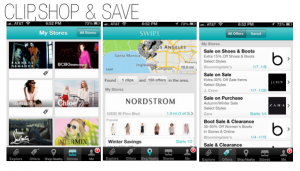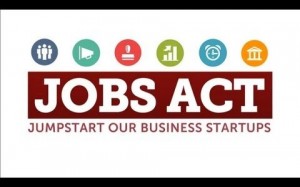
We love SXSW not only because of the parties and people (although we should note both are excellent), but also because, on a more earnest note, we at Oishii love participating at SXSW V2V and the community of like-mind entrepreneurs and creativists who experiment with the order of things.
Building on the SXSW experience, SXSW V2V is a four-day event in Las Vegas with an emphasis on the creative spark that drives entrepreneurial innovation.
In the days ahead, the 1,500 attendees will participate in informative panels, mentoring and coaching programs, intense workshops, pitch competitions and exhibits of startup innovations.
Here are a few highlights from today’s sessions:
America’s Entrepreneurial Spirit: The Case for Fixing our Broken Immigration System
Alex Torrenegra, CEO of VoiceBunny
Andrew Crump, CEP of Bluefields
Mark Falzone, Deputy Director National Immigration Forum
Rep. Joe Heck, US House of Representatives – US Congressman
Scott Allison, CEO of Teamly Inc.
This panel discussed what lies ahead for immigration reform, and what the tech industry can do to fix the broken system.
Key takeaways:
• Like a bad football team, we’re training the players with the best strategies and sending them out to work in other countries because of immigration.
• It’s necessary to bring (the right) talent to startups.
• There’s need to be a balance between bringing international talent and national security.
Founder’s Guide to Securing First Round of Funding
Alex Mittal, Co-Founder & CEO of FundersClub
In this session, Alex Mittal outlined the fundraising process for first-time founders, focusing on whether fundraising makes sense, best practices for securing their company’s first round of capital, the role investors will play in their company’s future, and things to consider before agreeing to investment terms.
Key takeaways:
• Try not raising money. 2/3 of IPOs are not from VC money.
• $25-50k can start companies. Go with your family and friends.
• Then raise about 18 months’ worth of money.
• Spending doesn’t equal results.
• The key to success: don’t die!
Not Just a Pretty Profile: Building Online Persona
Brett Martin
Christine Herron, Director of Intel Capital
Peter Kazanjy, Founder of TalentBin
This panel discussed the importance of cultivating the online persona, provide concrete examples of what has and hasn’t worked, and help you understand the challenges that come along with that creation.
Key takeaways:
• How a person can act like a brand and vice versa.
• Everyone has an online persona. Be proactive about managing it.
• Venture groups and employers will look at your online persona.
• Authenticity has to be proportional to what you share. Personality is what attracts people.
• Create goals and objectives around your online persona and build a content strategy for it.
• Purpose needs to be defined:
o Build professional credibility
o Professional engagement (personal)
o Create connections
• Address mistakes head on
• Your online identity carries over into the real world (examples: Uber, Lyft, etc.) Rating each other furthers that identity.
• First step to engage (if not already) is to signup, consume and learn.
• Good analytics tools: Reporative, Twitter (analytics) & Sprout Social
Keynote: The City as a Startup
Tony Hsieh, Zappos
Culture is to company as community is to city; it’s about values, innovation, serendipity, and attraction of smart startups and the creative class. Tony applies his Zappos corporate culture to build the most community-focused big city in the world, in Downtown Las Vegas.
Key takeaways:
• Tony invested in Zappos… and then joined the company because investing was boring.
• He invested into customer service instead of marketing.
• Culture is the most important thing in order to deliver happiness.
• The values can be anything; it just requires company alignment.
• There needs to be a higher purpose beyond profits.
• Brand and culture are different sides of the same coin.
• A great brand is a story that never stops unfolding.
• Zappos moving past its four walls and into community as well.

Zappos CEO Tony Hsieh
Learn How Top Brands are Succeeding by Being Transparent
Jeff Rosenblum, CEO of Questus
Jeff discussed how advertising is the connection point between consumers and corporations and that the industry can be the linchpin in a revolution that enables corporations to earn billions while moving the planet forward.
Key takeaways:
• Advertising is going through a revolution. Social media and technology are forcing a paradigm change.
• Advertising can save the world.
• Trust is at an all-time low. The authenticity of a brand is so important to building that trust.
• Because of technology, transparency is forced. If you don’t participate in the conversation, people will have it around you.
• As branders, we have to help companies be great. We can inspire a new generation of branding where authenticity drives consumers, not false messaging.
• Digital natives are now taking over the workplace. What happens as transparency natives come into the workplace?
• Advertising has to make a fundamental shift from “interrupting us” to adding value to our activities.
 Designer Josel Cruz came to the United States from Puerto Rico as a college student and aspiring designer. Around the Oishii studio space, he is known for his innovative design talents as much as for his love of drumming into the night — and chopping all manner of vegetables for lunch in the office kitchen. We are regularly inspired by his dexterities.
Designer Josel Cruz came to the United States from Puerto Rico as a college student and aspiring designer. Around the Oishii studio space, he is known for his innovative design talents as much as for his love of drumming into the night — and chopping all manner of vegetables for lunch in the office kitchen. We are regularly inspired by his dexterities.








